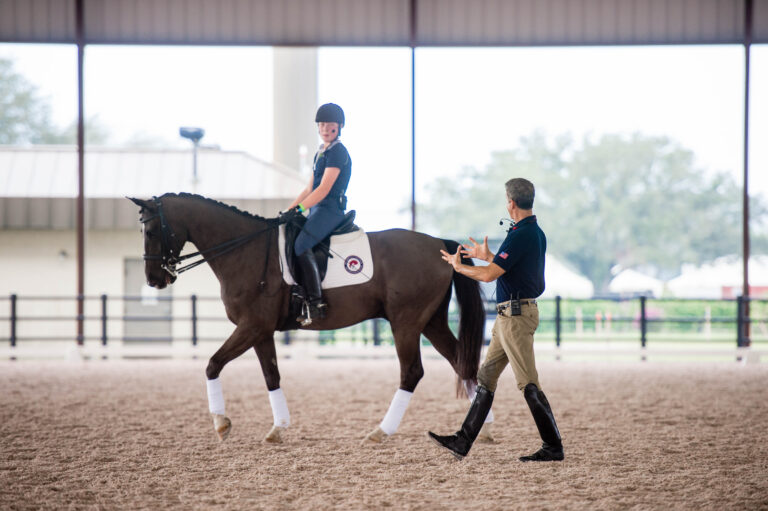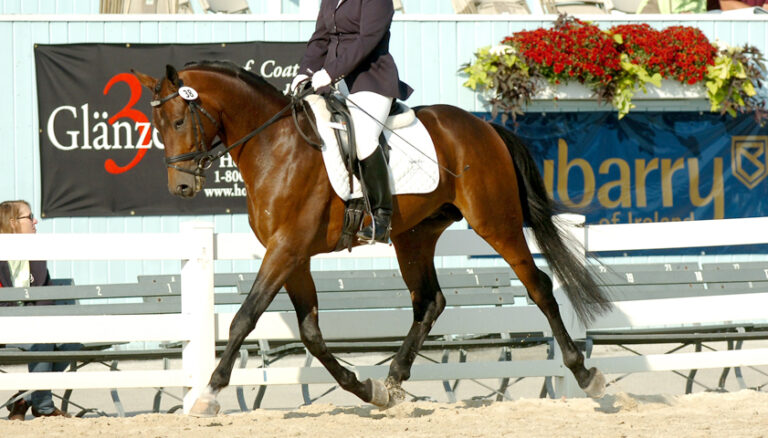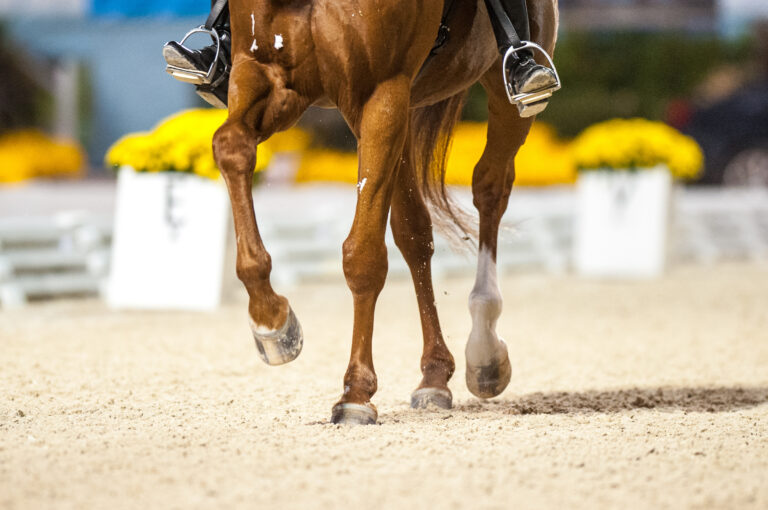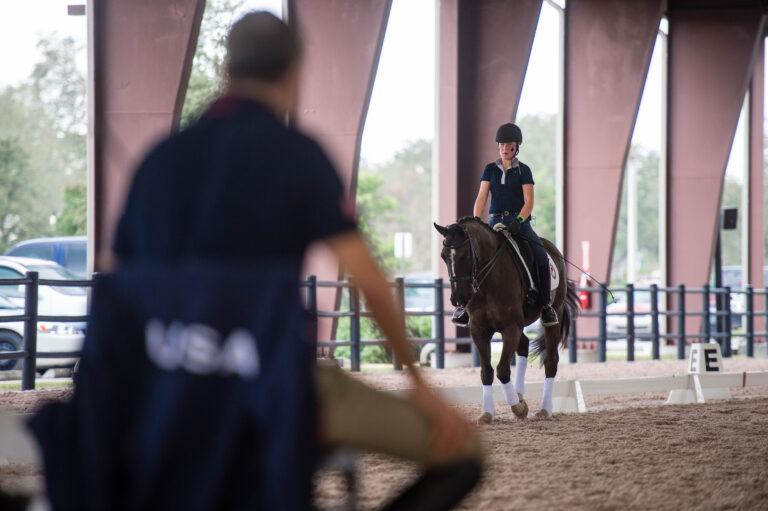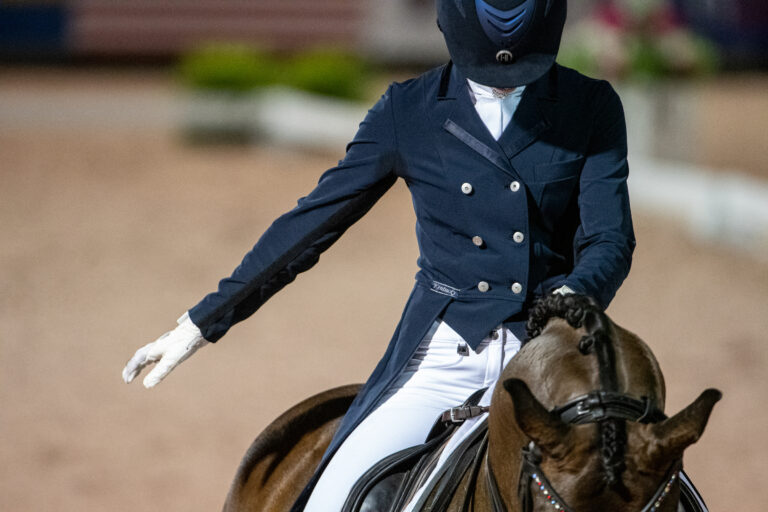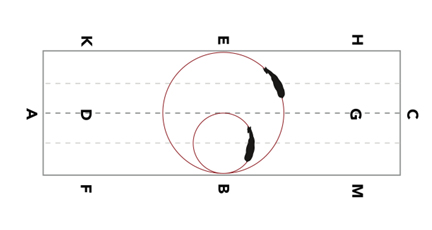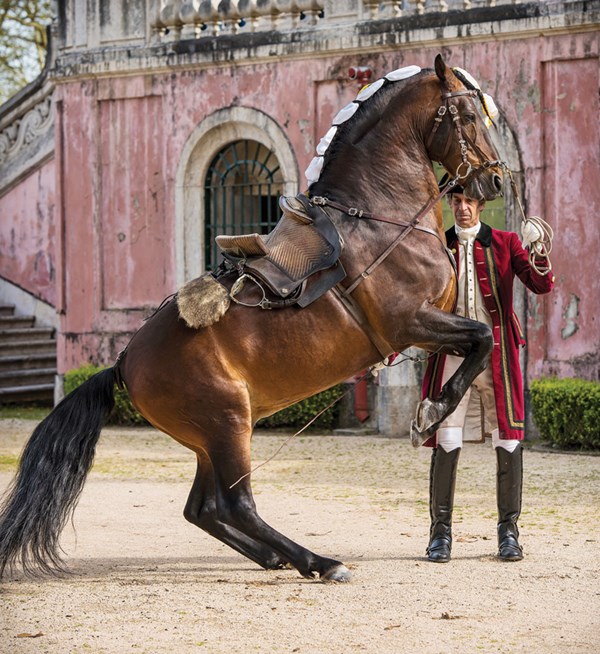
Q: What are the Steps of Teaching the Capriole?
Why do we so rarely see classical movements such as the capriole? How is the capriole taught? Is it based on classical dressage training or is it a trick?
Name withheld by request
A:
The most spectacular of the school jumps is the capriole. It is an exercise that requires a horse with a lively temperament and a trainer with great knowledge to prepare the animal for what he can so graciously perform on his own only two to three days after being born. The preparation is long; the execution is about two seconds. Let us briefly analyze the work it takes to get there.
When performing a capriole, the horse shifts his weight backward, jumps off the ground up to double his height, then kicks out with his hind legs, keeping the front end tucked in, then lands with all four legs simultaneously on the ground. The capriole is the most difficult of all the haute école movements. If the piaffe is considered the pinnacle of competitive dressage, the capriole is the pinnacle of the haute école movements. It is an extremely difficult exercise for the horse, and only few horses (and trainers) achieve it.
Following the rules of classical horsemanship, the basic exercise for the capriole is the piaffe. If this is well done, we enter into the domain of the airs above the ground, which begin with the levade. Then we follow the sequence of teaching the horse the croupade, ballotade, then capriole.
From the piaffe, the horse learns how to lower his hindquarters to the point where he transfers all his weight onto his hind legs, lifting his front legs off the ground, then tucking them in to produce the levade. The deeper the horse is able to sit in the levade, the more powerful the capriole will be later on.
From the levade, the horse is encouraged to jump with a touch of the whip. At first the horse performs what is more like a croupade—a jump with the four legs tucked underneath himself.
As the horse gets more familiar and physically stronger, the jump becomes higher, and again with the touch of the whip while in the air, he is encouraged to kick out. At first this is usually a jump where the horse’s four hooves or shoes can be seen from behind—it is called ballotade. At this point, more athleticism and familiarity with the movement are required to move into a clean capriole. The trainer works to lower the angle of the levade in order to catapult the hind legs into a higher jump. He cracks the whip in the air when the horse’s body is horizontal to the ground, and the horse releases a strong kick with both hind legs parallel to each other with the front legs tucked in and under, landing with all four legs on the ground at the same time—this is the capriole.
The whip is an important communication tool in teaching the airs above the ground. In the course of his training the horse learns to react to small touches of the whip. It is crucial that the horse regard the whip as an instrument and is not afraid of it. It acts like a baton in the hands of the conductor of an orchestra.
All the work is done from the ground first. Once the capriole is confirmed from the ground, a rider is able to perform this school jump from the horse’s back. Unlike smaller horses such as Andalusians, Lusitanos or Lipizzans, bigger and heavier horses will rarely achieve the capriole. The capriole is part of a tradition that students of classical horsemanship have learned for over 400 years. It takes supreme preparation of the horse and patience as well as an extraordinary trainer with a lot of feel for the horse. It also takes a talented and strong horse to be able to achieve such heights of horsemanship.
Frank Grelo has devoted himself to the breeding and training of the Lusitano horse while teaching the timeless art of classical riding to students from around the globe. His dancing horses have appeared in movies, television commercials and print advertising. He owns Grelo Farms in Caledon, Ontario, Canada.


